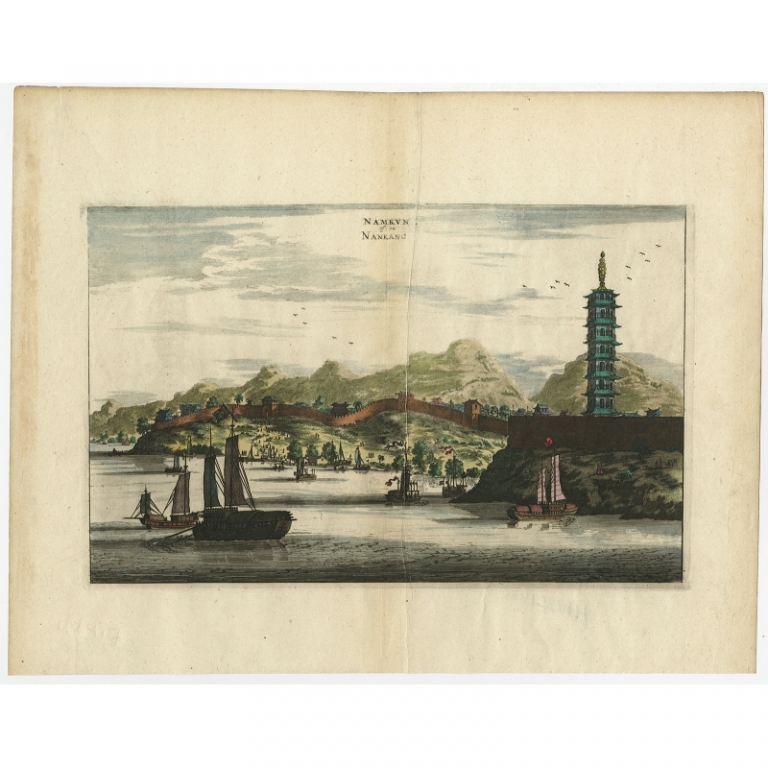FREE
WORLDWIDE
SHIPPING
No products
PCT-58755
Antique Print of of Nanjing by Nieuhof (1665)
- Condition: Fair, given age. Some minor crinkles and creases. Vertical printing crease right of middle fold. Original middle fold as issued. General age-related toning and/or occasional minor defects from handling. Please study scan carefully.
- Date: 1665
- Overall size: 37 x 29 cm.
- Image size: 29.3 x 18.6 cm.
Worldwide
shipping
Description: Antique print, titled: 'Namkun of Nankang' - View of the Chinese city of Nanjing with its ramparts. Behind the city wall a pagoda can be seen. On the foreground several ships are depicted.
This original old antique print / plate originates from : 'Gezandtschap der Nederlandtsche Oost-Indische Compagnie ... aan den grooten Tartarischen Cham, den tegenwoordigen keizer van China.' (Nieuhof's China expedition from 1655-1657.) by J. Nieuhof. This edition was published in 1665. The work was famous for its wealth of engravings, while the text was based on earlier (Jesuit) sources as well.
Artists and Engravers: Made by 'Johan Nieuhof' after an anonymous artist. Johan / Jan / Johannes Nieuhof / Nieuhoff / Neuhof (1618-1672) was a Dutch traveler who wrote about his journeys to Brazil, China and India. The most famous of these was a trip of 2,400 km from Canton to Peking in 1655-1657 as part of a Dutch envoy, which enabled him to become an authoritative Western writer on China. Johan Nieuhof was born in Uelsen, Germany, of which his father (originally from Zwolle) was mayor. Nieuhof left for Brazil in 1640 as a reserve officer-candidate - from then on, barring two short family visits in 1658 and 1671, he spent all the rest of his life abroad. After an adventurous career in the service of the Dutch East India Company (or VOC) - between 1660 and 1667 he occupied posts in India and on Ceylon - he then lived in Batavia until 1670. He then disappeared without trace on Madagascar, traveling in a sloop from which he had landed to seek drinking water. The engravings are made after Nieuhoff's drawings.



